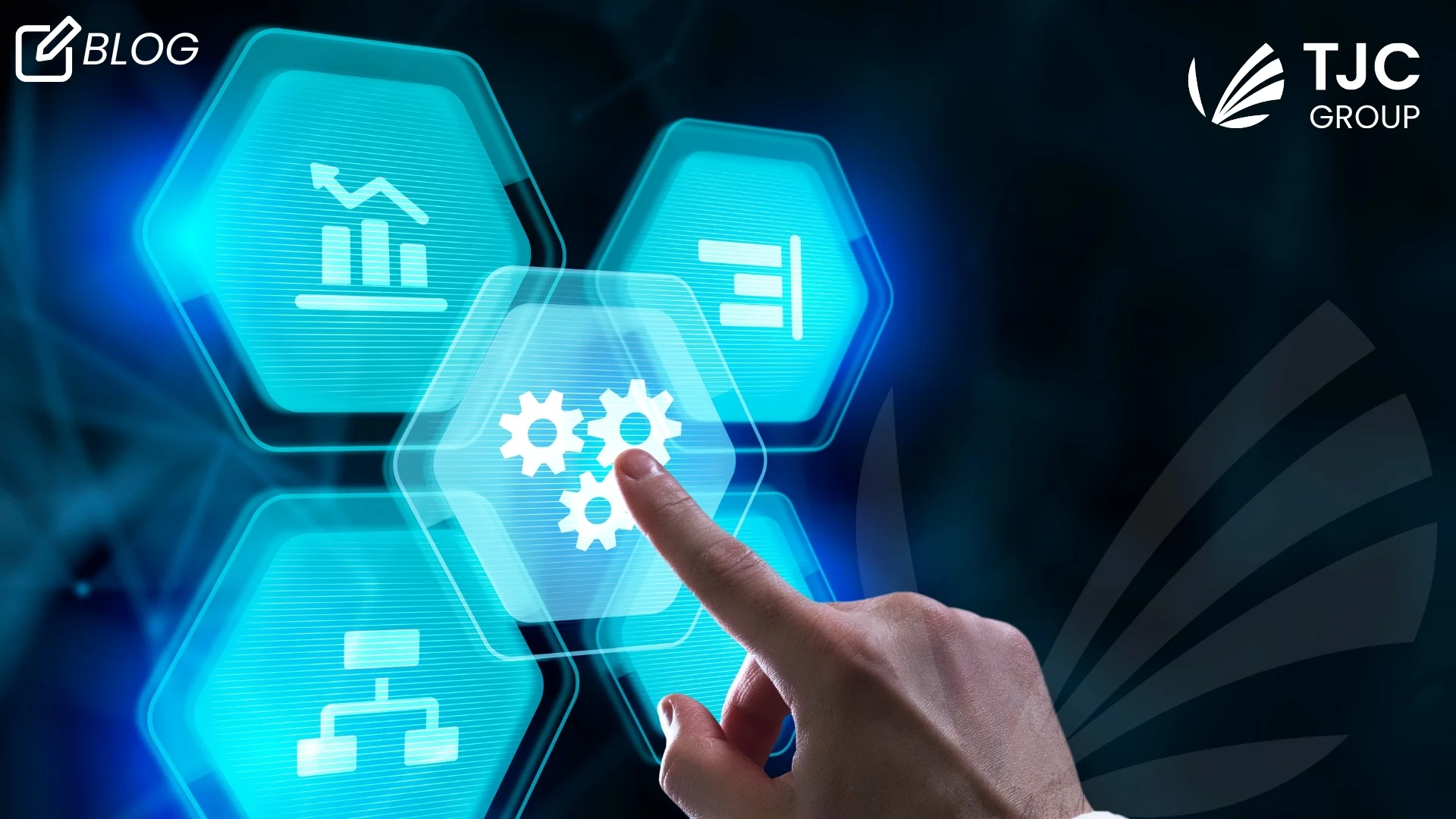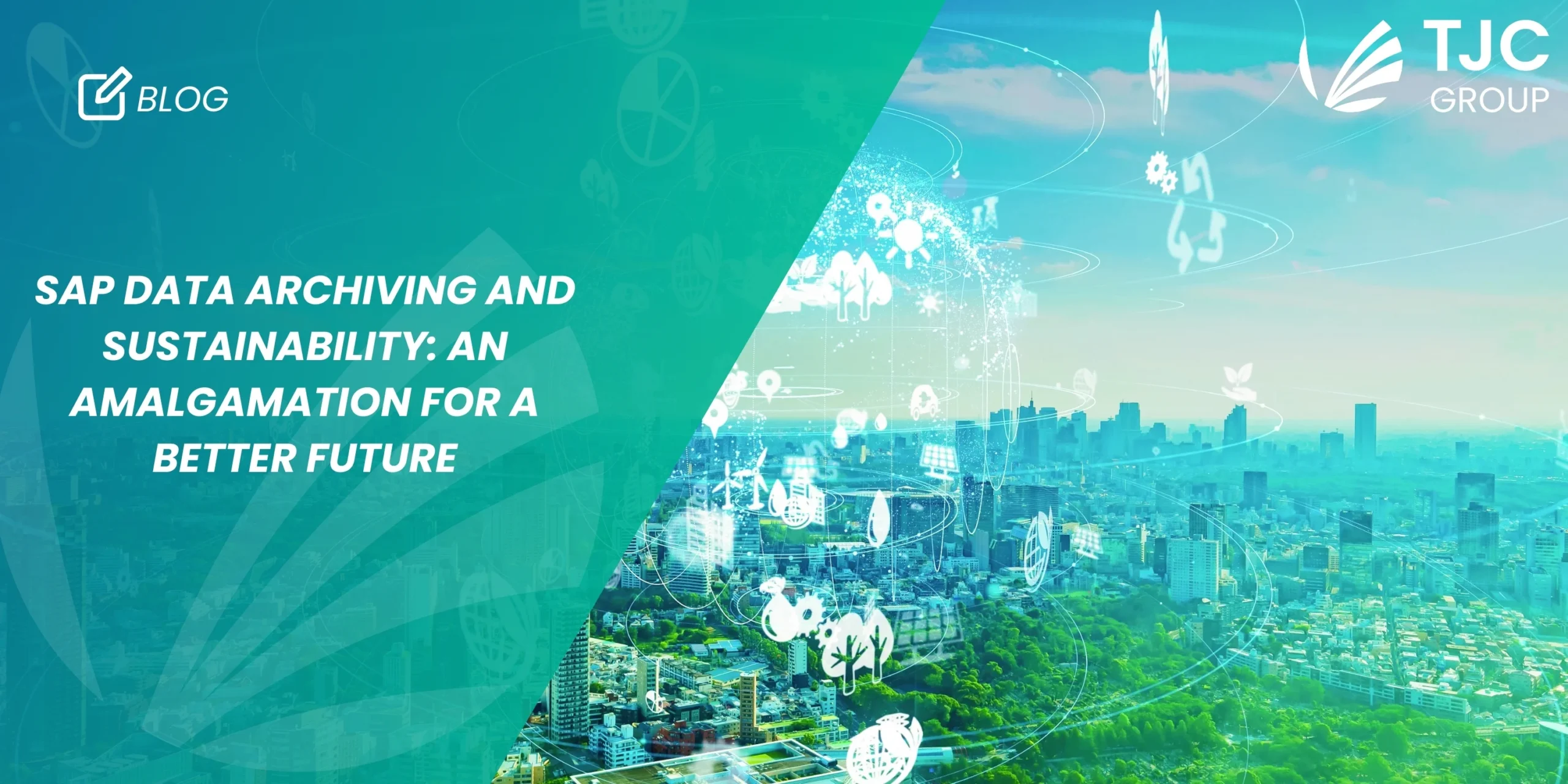Author: Priyasha Purkayastha, Global Content Manager, TJC Group | Co-author: Patchanok K, B2G Team Lead, TJC Group
“Sustainability is the need of the hour” – this has become the go-to slogan in today’s world. After all, the effect of adopting non-sustainable solutions leads to tremendous climate change and overall environmental issues. We know data archiving is one of the ways to curbing the digital footprint of IT organisations. Similarly, e-invoicing and reporting is yet another magnificent way of ensuring sustainability in today’s world. Dive into this blog to get a better and more in-depth understand of the same!
Table of contents
- Introduction
- The evolution of a more streamlined, sustainable process
- A way forward with e-invoicing and reporting for sustainability
- Boosting ESG performance through strategic e-invoicing transition
- Social advantages of implementing e-invoicing
- Governance benefits of adopting e-invoicing
- E-invoicing and reporting: Its role in ESG reporting
- How does e-invoicing improve corporate sustainability?
- Global reach with minimal environmental impact
Introduction
Invoicing is one of the most important aspects of financial management, but the amount of paper used for this process is massive. As a matter of fact, the environmental impact of financial management is often underestimated. Let’s take manual invoicing as an example – a single large bill can generate approximately 2 million invoices a year in Singapore alone. So, if we are to paper invoices, using a simple calculation, 500 pieces of paper i.e. 1 ream can mount to a thickness of 5cm. Therefore, 2 million pieces of paper when stacked will measure up to 200 m, which is equivalent to the height of Marina Bay Sands. And this calculation is based on the assumption that each invoice used only a single page; imagine if each invoices use at least 2-3 pages.
Apart from this, you’d be shocked to learn that simply creating paper invoices uses as much energy per year as the consumption of 20 million households. That’s a huge amount of energy; just in the creation and then sending involves even more energy usage. As a matter of fact, paper invoices generate three times more CO2 than e-invoices. They are responsible for almost ten percent of all trees cut down worldwide.
The evolution of a more streamlined, sustainable process
The use of paper in manual invoicing is quite a lot, and given today’s conditions, it is highly necessary that minimise paper usage. Not just that but eliminating paper from your invoicing processes also happens to be one of the easiest ways for your company to significantly improve its environmental sustainability credentials.
As everything combines together, there is a paradigm shift globally as sustainability and environmental responsibility takes the spotlight, and rightfully so. With this, organisations also have become increasingly more aware and seeking ways to reduce their digital carbon footprint while adopting more eco-friendly measures. However, just by cutting down on paper usage will not suffice. We need more robust and long-lasting solutions to tackle this problem. Businesses must embark on their digital journey for financial management to not just save the environment but also to improve their process efficiency. E-invoicing and reporting is one clear example and measure that contributes to the aforementioned aspects.
E-invoicing is as good for business cost cutting as it is for the environment. According to the E-invoicing Journey 2019-2025 report by Bruno Koch, automated e-invoicing will typically result in cost savings of 60-80% compared to conventional paper invoice processing. Perhaps, it is time to make the switch?
A way forward with e-invoicing and reporting for sustainability
The global expansion of the e-invoicing market significantly takes inspiration from the several mandates by governments across the world for organisations to adopt to the electronic invoicing exchanges. At the forefront of adopting electronic invoicing is the LATAM region, followed by Europe and Asia. However, with several governments making its adoption mandatory, a rise in the e-invoicing market is evident. As a matter of fact, a report by Billentis suggests that the size of the global electronic invoicing market will hit EUR 8.3 billion (USD 8.9 billion) in 2024. Furthermore, the market will hit approximately EUR 22.2 billion (USD 23.7 billion) in 2028 at CAGR 27.9%.
While e-invoicing is the right way forward for organisations to meet their sustainability targets, a crucial factor to keep in mind is that implementing electronic invoices without AP automation still requires printed invoices for verification processes. This is because users might need to review and approve invoices manually. Having said that, e-reporting too is not related to sustainability directly; it is an additional requisite for government compliance and doesn’t reduce paper usages.
Boosting ESG performance through strategic e-invoicing transition
The template of Environmental, Social, and Governance or ESG helps investors, organisations, and others-alike assess the operational impact of a business within a much more comprehensive environmental and social frameworks. But how does it relate to e-invoicing? Well, electronic invoicing improves the ESG values substantially by aligning with the primary objectives of sustainability and ethical corporate conducts. The fact of the matter is that even though e-invoicing and sustainability works hand-in-hand with greater advantages, it is true that electronic invoicing also contributes to social and governance improvements significantly.
Having said that, transitioning to e-invoicing is a meticulous measure for organisations planning to support their ESG performance and reporting. According to the same Billentis report, e-invoicing contributes to the environment significantly. However, assessing the CO2 footprint of a paper invoice imposes a comprehensive analysis that encompasses the entire lifecycle of the invoice – i.e., from paper production to its final delivery.
Key factors include –
Invoice production
Type of the paper used: One of the key factors under invoice production is the type of the paper. It is significantly better to use recycled papers as it helps with lower CO2 emissions when compared to fresh fibre papers.
Source of energy: Another thing to keep in mind is the source of energy in the production of invoice. Employing renewable energy sources like wind or solar energy during manufacturing significantly reduces CO2 footprint as contrasted to fossil fuels utilisation.
Manufacturing efficiency: Organisations must ensure the use of advanced and efficient manufacturing facilities. They are capable of reducing the consumption of energy, further reducing carbon dioxide emissions.
Types of materials: Beyond paper, the environmental impact assessment extends to related materials like envelops and stamps. It is quintessential to ensure that these materials are eco-friendly.
Number of sheets: The fact of the matter is that the average number of sheets used per invoice affects the calculation of the CO2 emissions. However, the average varies based on the type of customer, sectors of operation, etc. Although, if we have to speak generally, within the e-invoicing sectors that the average number of sheets is approximately 2.5 pages per invoice.
Printing of invoices
Efficiency during digital printing: Organisations must employ digital printing techniques as they enhance the efficiency of the process. This is particularly effective over the traditional methods when it comes to smaller quantities.
Selection of the ink: The carbon footprint impact is influenced by the ink used in the printing process, like oil-based or water-based inks. The impairment in the environment often arises from the harmful chemicals used in the printer ink. These chemicals can be non-degradable plastics, petroleum oil, and toner cartridges, leading to massive pollution in the end of their lifecycle. As a matter of fact, when these cartridges are disposed of in landfills or aquatic environments, they release toxic metals and volatile organic compounds (VOCs), which causes extensive soil and water contamination. At present, less than 30% of these cartridges are recycled. Therefore, organisations must ensure to select printing inks that have the least amount of environmental impact.
Processing and administering of invoices
Efficiency of the office appliances: It is quintessential for organisations to utilise machinery and equipment that are energy efficient for the preparation of invoicing tasks, such as folding, enveloping, and sorting, to name a few. Using such efficient equipment helps reduce carbon emissions significantly.
Administrative energy usage: Another factor to consider is the administrative energy usage. The energy in the invoicing process, especially through computer systems, must be taken into account when calculating CO2 emissions. Additionally, the time for the processing of paper invoices must also be considered in the calculation of carbon footprint.
Transportation and delivery
The method of transport: The transportation and delivery methods of the invoices also plays a huge role in determining carbon emissions. An air freight increases the emissions substantially as compared to other alternatives like trains, trucks, ships, etc.
The distance of transportation: Interestingly, the distance of transportation between the printing facilities and invoice recipients also determines the carbon footprint.
Delivery efficiency: To ensure lower carbon footprint, improving the efficiency of the last-mile delivery, especially in urban areas, is crucial. This can be achieved through the use of low-emission vehicles like electric cars or bicycles.
Disposal and recycling
Recycling practices: Recycling used papers can markedly curb the overall carbon footprint of invoices, because recycled materials require fewer resources for production of new paper supplies or goods.
Disposal methods: The emissions of CO2 into the environment also depends on the disposal methods. As a matter of fact, the disposing paper invoices using techniques like landfill, incineration, etc., influences carbon balance.
Digital archiving: One of the methods that organisations must adopt is digital archiving of their invoices. In digital archiving, you archive all the related data, thereby reducing the digital CO2 footprint as well. Not just this, digital archiving also helps free up storage space, further reducing the cost of buying new storage.
Commonly, the carbon footprint of paper is estimated to range between 1.45 kg to 3.6 kg of CO2 per kg of paper. However, as aforementioned, recycled paper generates lower carbon footprints when compared to the fresh fibre papers. One end of this spectrum indicates the use of modern, efficient, and eco-friendly methods, leveraging renewable energy sources. However, even with this, Billentis suggests that – if they adopt a conservative estimate of 2 kg CO2 per kilogram, the carbon footprint for a single 20g paper invoice would be around 40-45g.
The solution for this is simple i.e., adopting e-invoicing! Let’s see how e-invoicing boosts the ESG performance for organisations.
Social advantages of implementing e-invoicing
While e-invoicing and sustainability co-exists for the betterment of the environment, it also brings in several social advantages for organisations. Some of which are –
Accessibility and inclusivity
With electronic invoicing, organisations can enhance their accessibility globally, including remote or unreachable regions. The fact of the matter is that e-invoicing helps in quicker and more efficient transactions, strengthening the economic sustainability of the organisations, including SMEs while aiding in forming broader economic growth.
Transparency and traceability
Another social advantage of e-invoicing is that it offers superior tracking and storage capabilities in contrast to the traditional paper invoices. Therefore, it also enhances the transactional transparency while facilitating more seamless audits and verification processes. Furthermore, it aids in fighting frauds and ensuring adherence to the regulatory standards, overall offering benefits to all the parties involved.
Financial efficiency
Electronic invoicing offers magnificent benefits to organisations when it comes to the financial aspects. With e-invoicing, organisations can expect the invoices to be settled at least 5-7 days sooner than the paper invoices, thereby eliminating the need for external financing. This is a blessing, especially for SMEs that often face obstacles when accessing their financial resources. Additionally, with e-invoicing solutions like SAP Document and Reporting Compliance or SAP DRC, the entire process becomes much more accelerated, less complex, and more seamless.
Impact on the shadow economy
Introducing tax reporting mechanisms boosts the country’s tax revenue substantially. As a result, there is an increase in the revenue, which further benefits the society comprehensively by reducing the size of the shadow economy to a great extent.
Governance benefits of adopting e-invoicing
Along with social advantages, e-invoicing and sustainability together helps with governance benefits as well; some of which are –
Compliance and standardisation
Adopting e-invoicing will help streamline adherence to regulatory requirements. It helps simplify compliance with the mandatory tax laws and invoicing standards. With the influx of e-invoicing getting mandatory across several regions, organisations can leverage the flexibility of these electronic systems. How? Well, to adapt to the ever-changing legal amendments while ensuring that the governance standards are upheld.
Better internal controls
Integrating electronic invoicing systems also assists in ensuring improved internal controls, especially providing clear oversight of financial transactions. The automated invoice processing and reconciliation helps eliminate the chances of inaccuracies and fraudulent transactions and activities, thereby ensuring even more reliable and accurate financial reporting.
Improved efficiency and accountability
One of the most sought-after benefits of e-invoicing is that it helps organisations optimise their invoicing processes. Additionally, it helps in reducing their administrative burdens and improving accountability. Thanks to the automation capabilities of e-invoicing, organisations can now lead more efficient and seamless operations. Furthermore, this promotes transparency within enterprises.
E-invoicing and reporting: Its role in ESG reporting
There’s an increasing number of organisations that are mandated to conform to the ESG reporting standards. In the UK and the US, ESG reporting primarily applies to capital market participants. The European Union’s Corporate Sustainability Reporting Directive (CSRD) extends ESG reporting to nearly 50,000 companies, effective since January 2024. With the help of CSRD, the aim is to bridge the gaps in the existing reporting frameworks while broadening the scope of sustainability reporting.
As a matter of fact, this marks the introduction of mandatory reporting standards at the EU level. Further, it raises the accountability of European businesses pertaining to sustainability. E-invoicing and reporting implementation is significantly pivotal in this context as ESG reporting is an intricate task, and it becomes more demanding for SMEs. Another thing that organisations must keep in mind is the Scope 3 emissions reporting. The Scope 3 emissions reporting requires supplier data to be integrated, and it can be a notable challenge for organisations. At this, e-invoicing stands apart from the crowd, particularly providing essential data, which not only includes Scope 3 but also Scope 1 and 2 emissions as per the Greenhouse Gas Protocols. What’s even more interesting is that e-invoicing and reporting also includes the Product Carbon Footprint report. This makes it less challenging and more seamless for organisations of all sizes.
How does e-invoicing improve corporate sustainability?
There are lots of reasons why e-invoicing is much better for the environment. Here are the most important benefits for our planet.
Reduced paper usage
This is an obvious benefit but a very significant one. By eliminating the need for paper invoices, we contribute to saving millions of trees every year. In Europe alone, it is estimated that 30 billion invoices are sent each year, which consume around 12 million trees, according to EU data.
Lower carbon emissions
Eliminating paper invoices reduces the overall carbon footprint. This is because paper invoices produce three times more CO2 than e-invoices. By taking away the use of paper, printing equipment and the physical transportation of invoices, the overall carbon footprint reduces.
Decreased energy consumption
E-invoicing requires less energy for processing compared to traditional paper-based methods. Because e-invoicing eliminates the need for printing, mailing, and manual data entry.
Reduced waste
E-invoicing minimises waste from paper, plastic ink cartridges, and other consumables associated with traditional invoicing processes. These are especially related to consumables that need to be disposed of responsibly or recycled.
Optimised supply chain
By making the invoicing process digital, businesses can streamline their operations, reducing the physical supply chain, etc. Additionally, any associated environmental impacts, like postal services also curbs.
Less physical storage
E-invoicing eliminates the need for physical storage space for paper invoices. This, further, reduces the environmental impact of maintaining and powering storage facilities in offices.
Global reach with minimal environmental impact
E-invoicing allows for instant delivery of invoices across geographical borders, without the need for long-distance transportation. This further reduces carbon emissions.
By implementing e-invoicing, businesses can significantly contribute to their sustainability goals while also improving efficiency and reducing costs. It’s a win-win for everyone. Want to learn more on how e-invoicing and reporting contributes to sustainability? Contact our B2G experts now!
Stay tuned with TJC Group blogs to get more in-depth insights on e-invoicing, SAP DRC, and overall data management.












